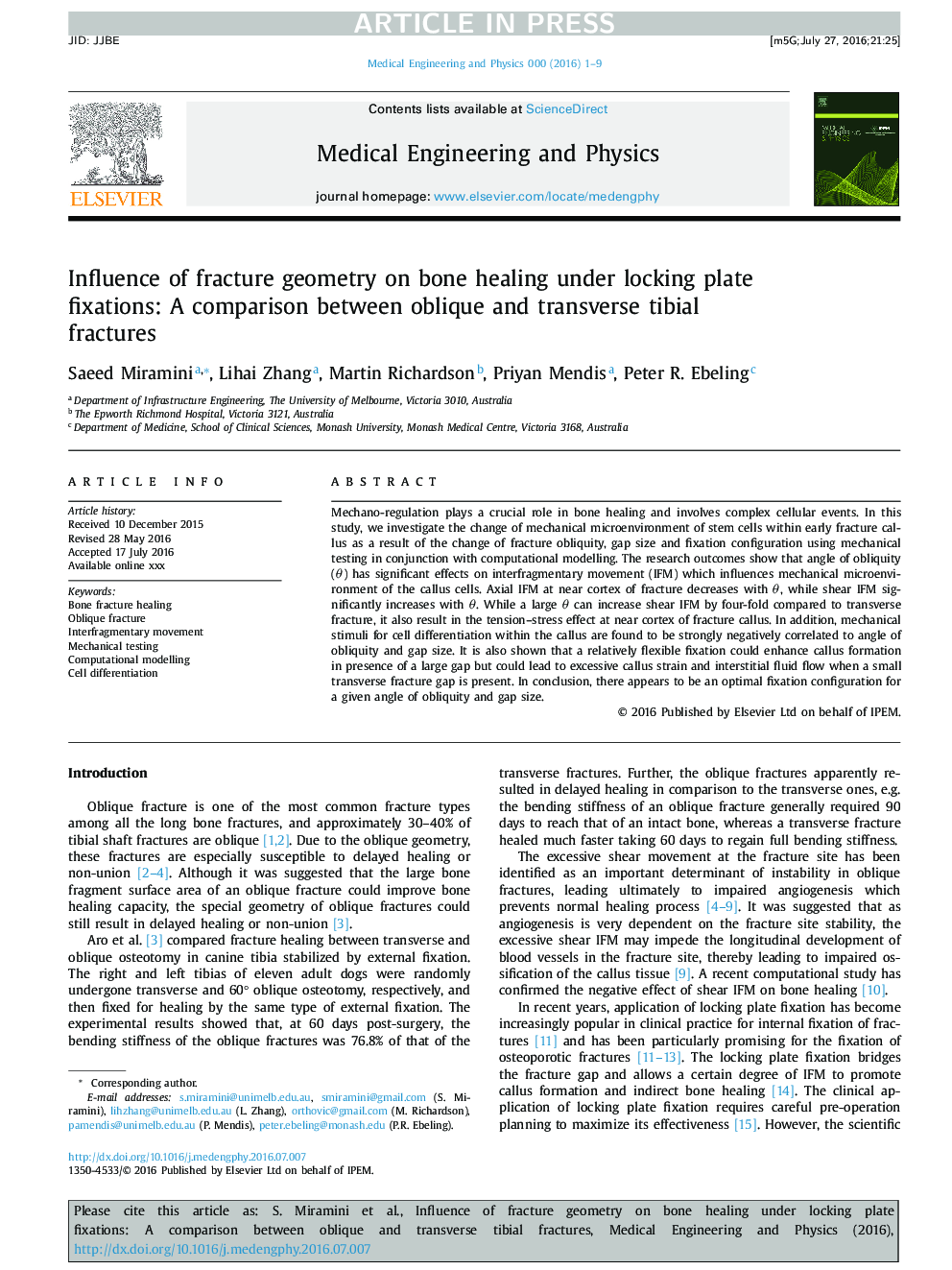| Article ID | Journal | Published Year | Pages | File Type |
|---|---|---|---|---|
| 5032797 | Medical Engineering & Physics | 2016 | 9 Pages |
Abstract
Mechano-regulation plays a crucial role in bone healing and involves complex cellular events. In this study, we investigate the change of mechanical microenvironment of stem cells within early fracture callus as a result of the change of fracture obliquity, gap size and fixation configuration using mechanical testing in conjunction with computational modelling. The research outcomes show that angle of obliquity (θ) has significant effects on interfragmentary movement (IFM) which influences mechanical microenvironment of the callus cells. Axial IFM at near cortex of fracture decreases with θ, while shear IFM significantly increases with θ. While a large θ can increase shear IFM by four-fold compared to transverse fracture, it also result in the tension-stress effect at near cortex of fracture callus. In addition, mechanical stimuli for cell differentiation within the callus are found to be strongly negatively correlated to angle of obliquity and gap size. It is also shown that a relatively flexible fixation could enhance callus formation in presence of a large gap but could lead to excessive callus strain and interstitial fluid flow when a small transverse fracture gap is present. In conclusion, there appears to be an optimal fixation configuration for a given angle of obliquity and gap size.
Keywords
Related Topics
Physical Sciences and Engineering
Engineering
Biomedical Engineering
Authors
Saeed Miramini, Zhang Lihai, Martin Richardson, Priyan Mendis, Peter R. Ebeling,
